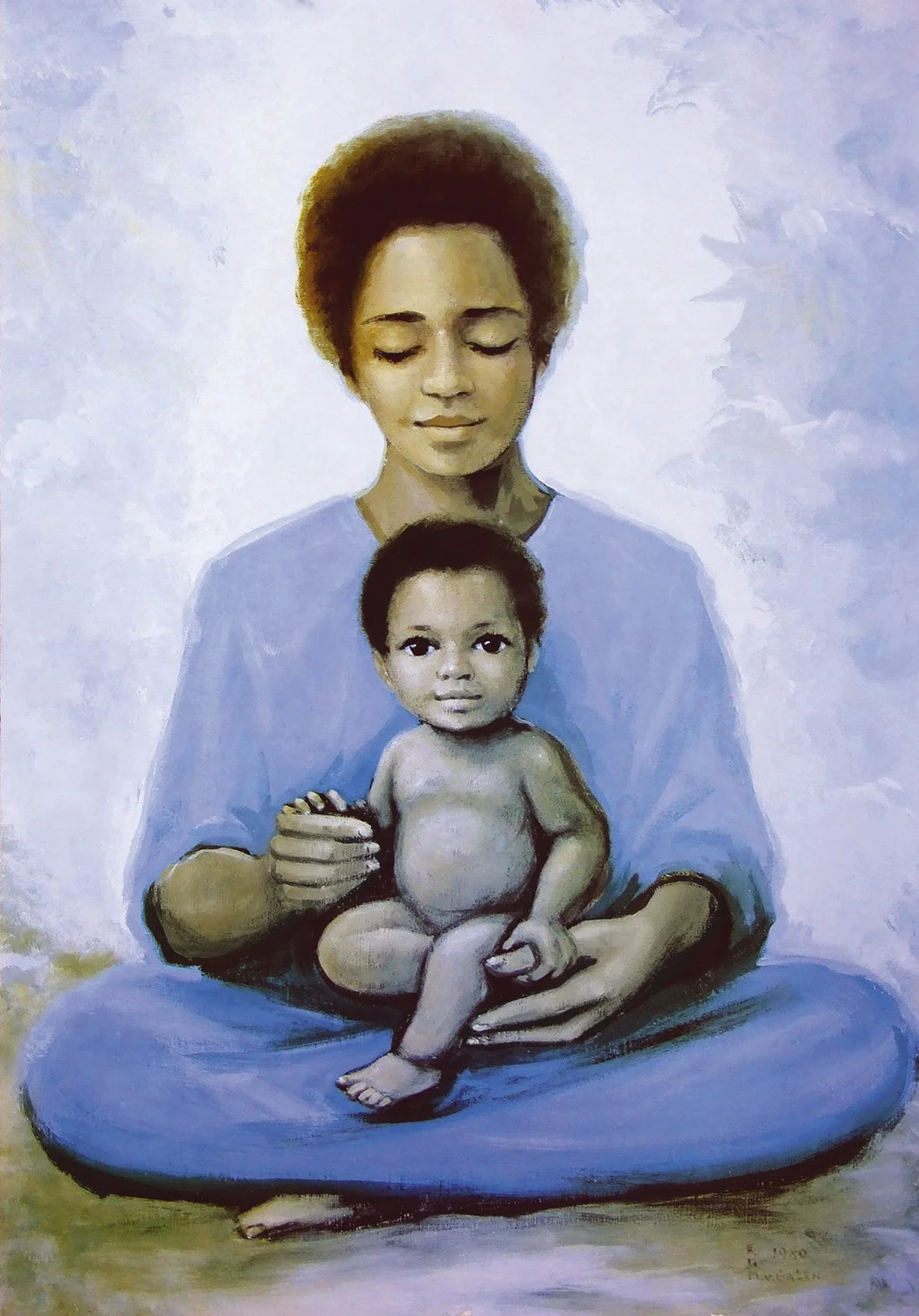Mama Bilong Jesus
By Roland Ashby
As our hearts cry out for peace in Ukraine and throughout the world this Christmas, we recall with even greater poignancy the coming of the Prince of Peace. For peace, joy and love are at the heart of Christ’s birth, and celebrated in this painting of Mary and Jesus by Sister Maria van Galen*.
Even in the midst of all the violence and suffering in Ukraine and throughout the world, and to which Jesus also fell victim under the brutal Roman occupation of Palestine over 2000 years ago, we cling to Christmas’s fragile hope that love, as Michael Leunig writes, is always born, even in the most unlikely places:
Love is born
With a dark and troubled face
When hope is dead
And in the most unlikely place
Love is born:
Love is always born.[1]
“Love is always born.” This is what the late Michael Mayne, a former Dean of Westminster Abbey, described as the “enduring melody”. And perhaps one of the greatest musical expressions of it is Handel’s Messiah, which seems to encapsulate all of the incredible, and enduring power, of divine love’s breaking into the world through Christ.
After attending a magnificent performance of Messiah last week I was unwell, and was lovingly attended by a retired doctor, who had accompanied a friend who was also attending the concert. He waited calmly and patiently with me until the ambulance arrived, gently reassuring me that all would be well. Love is always born.
Two young paramedics arrived, and even though it was near the end of their 12 hour shift, they provided all the professional care and expertise they could muster, with energy and devotion. Love is always born.
At the busy hospital emergency department the same rule of love applied. Young nurses and doctors giving all they had, selflessly. Love is always born.
Not one had heard of Handel’s Messiah, and possibly many of them would not identify as Christian, yet they were being Christ for me that night. Love is always born: the enduring and universal melody across millennia, and breaking through all barriers.
When 14th century mystic Julian of Norwich desired to know “what was Our Lord’s meaning” in his birth, death and resurrection, she received this reply:
Would you know your Lord’s meaning in this? Learn it well. Love was his meaning.
Who showed it to you? Love.
What did he show you? Love.
Why did he show you? For love.
Hold fast to this, and you shall learn and know more about love, than you will ever need to know or understand about anything else forever and ever.[2]
*This painting, entitled Mama Bilong Jesus (‘Jesus’ Mother’ in the Tok Pisin language of Papua New Guinea) depicts Jesus and his Mother Mary as Papua New Guineans. It was painted to illustrate the universality of the Christian faith, by Sister Maria van Galen fmm, a Franciscan Missionary of Mary, and a renowned artist, in 1980. The painting now hangs in the Janssen Spirituality Centre, Boronia, Victoria, Australia.
